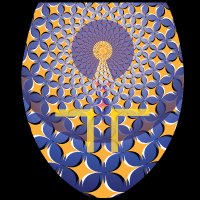Can this man successfully treat opioid addiction with marijuana?
hen Joe Schrank got the call six years ago that his friend Greg Giraldo had been found unconscious after an overdose in a New Jersey hotel room, he was not surprised. Giraldo, a comedian, had cycled through the addiction loop for years, and Schrank had tried in vain to save him.
“Greg’s death really rattled me to the core,” says Schrank, a trained social worker who works with addicts. “He tried the abstinence route and it never really took root. I felt like rehab had failed him. It failed his family. It failed me. I kept thinking he could be smoking pot instead of dead. And that’s a big difference.”
Using pot instead of cocaine and Valium was something Schrank had suggested to his friend weeks before his death. Although it is an unpopular idea in the rehab world, where Schrank had made his career (first at the Malibu detox center Promises, then as head of a clean house in Brooklyn and founder of the The Fix, a website dedicated to addiction recovery), he nonetheless had a hunch marijuana could have helped his friend.
Don't smoke it with tobacco: scientists suggest ways to make cannabis safer Read more
“There’s no lethal dose,” says Schrank who has collaborated with the addiction psychiatrist Scott Bienenfeld for the past decade on cases Bienenfeld oversees medically.
Indeed, page through the National Academy of Sciences’ latest 395-page report of 10,000 scientific abstracts on the health effects of cannabis, and you’d be pressed to find a single mention of death by marijuana overdose in adults. Yet because of its longtime classification as a Schedule 1 drug (right up there with heroin), research on marijuana’s impact on our health remains limited and largely inconclusive.
After Giraldo’s death, Schrank began working with Bienenfeld on treatment plans that incorporated marijuana as a crucial detox step. He also connected with Amanda Reiman, former head of marijuana law and policy at the Drug Policy Alliance, whose research at University of California, Berkeley, for more than a decade has focused on the use of cannabis as a viable substitute for prescription drugs.
This January, Schrank took another step and opened High Sobriety – a first-of-its-kind rehab center that uses cannabis as a central part of its treatment plan. Seen as a highly contentious move in the rehab world, High Sobriety has been met with skepticism and criticism for its use of marijuana in a field where success is traditionally measured by total abstinence.
Unapologetic approach

A view of Culver City, the southern California neighborhood home to High Sobriety. Photograph: Pete Pin for the Guardian
High Sobriety is an unapologetic name for an unapologetic approach Schrank feels could have saved not just Giraldo’s life, but those of countless others who find themselves trapped in the vortex of drug addiction.
The center is housed in an inconspicuous set of gray and orange row houses in Culver City, Los Angeles. Step inside the new facility, and you feel like you’ve entered a West Elm showroom. Behind a set of glass doors is what Schrank calls the “consumption area”, a deck overlooking a busy industrial street where patients at High Sobriety will use marijuana when allowed by the doctor overseeing their care.
“Part of my branding with recovery is that it should feel like a cool place. It shouldn’t feel like you’re institutionalized,” says Schrank. “If we are trying to tell people your life will be great, why can’t we lead with that foot?”
High Sobriety costs start at $42,500 for an initial month of treatment, which, while steep, is comparable to the cost of other inpatient programs, says Schrank. “That’s the first grenade that’s being lobbed at me – that this is a money-making scheme,” he says. “My response is: every guy that runs a not-for-profit rehab makes more money than I do. So if this is a money scheme, I’m doing something very wrong.”
Patients admitted to High Sobriety, which can accommodate up to 24 people at a time, undergo an evaluation that takes into account biological, psychological and social factors like genetics, mood, personality and socioeconomic conditions. This biopsychosocial evaluation, which is standard practice in the rehab world, is crucial in figuring out what makes each patient’s case unique.
What’s not standard rehab practice, however, is the center’s inclusion of marijuana as part of both a regimen to help people get through withdrawal symptoms and as a reward at the end of the day.
For Nik, 27, who came to High Sobriety in February after a close call with heroin and crystal meth, using marijuana five to six times a day under supervision is part of his initial regimen. The cannabis helps stave off his nausea, bone pain, insomnia and drug cravings that come with detox. “If this place wasn’t here right now in my life, I would be dead. I was pretty close to dying two weeks ago,” says Nik, who has been through about 15 treatment plans over the past decade. “The idea of abstinence is great if you can live a life that feels connected,” he says. “It’s not viable for everyone.”
Nik’s use of marijuana half a dozen times throughout the day is extreme, Schrank acknowledges, but for him it’s necessary at this early stage of detox when dealing with such strong drugs as heroin and methamphetamine. For patients who have stabilized beyond their initial detox, marijuana consumption at High Sobriety goes down to twice a day – once midday and again before bed.
The goal is to get patients through the crucial first 30 days of detox and set them up with a means of maintaining that way of life, says Schrank. A few scientific studies seem to support his position. A recent University of Michigan study found patients using medical marijuana to control chronic pain reported a 64% reduction in their use of opioids. In states where medical cannabis has been legalized, opioid overdose deaths have decreased by 25%, according to research out of Johns Hopkins School of Public Health.
In hospitals, hotel rooms and homes across the US, deaths from opioid overdose have quadrupled since 1999. Patients like Nik, who says he was abstinent from drugs for four years, receive prescription painkillers from their doctors (in Nik’s case, for lockjaw), that send them into a spiral of opioid addiction. The “treatment gap” plaguing the addiction crisis – only 10% of people in need of treatment get it – is a result of a range of factors, from an inability to access affordable care to a lack of substance disorder screenings.
But effective medical treatments and interventions exist. Research over the years has shown that increasing access to medications such as methadone, buprenorphine, and naltrexone – withdrawal agents given under medical supervision to help wean people off opioids and heroin – have been shown to help addicts get through withdrawal, reduce relapse and overdose, and go on to live healthy, functional lives. Nik, for example, takes buprenorphine once a day to help block heroin cravings.
“Use of medications to treat addiction has been controversial at times because of a longstanding misconception that methadone and, more recently, buprenorphine merely ‘substitute one addiction for another’,” the surgeon general’s report warns. “This belief has reinforced scientifically unsound ‘abstinence-only’ philosophies.”
And while the report does not directly address the use of cannabis as a form of treatment for addiction, Reiman has found cannabis effective as part of a rehabilitation plan from opioids in particular, as it can reduce physical and psychological symptoms of withdrawal. In a 2009 study published in Harm Reduction Journal, Reiman concluded patients who substituted cannabis for illicit drugs, prescription opiates, and alcohol were able to better manage their symptoms and experienced fewer adverse side effects.

A patient’s bed in High Sobriety. Photograph: Pete Pin for the Guardian
This means, for example, that cannabis can serve as a non-narcotic replacement to help patients get through the necessary week-long withdrawal period required before the drug Vivitrol, an injectable shot used to block the receptors in the brain from craving heroin, can be effectively administered, says Bienenfeld.
Using cannabis during this detox process helps patients through the severe muscular pain, arthralgia and underlying psychopathologies such as anxiety and PTSD that accompany withdrawal in that first crucial week, he says.
But while the benefits have been seen in patient care, more research is required to make conclusive claims, warns Reiman. “We really want to gather data and understand how it’s working and why it’s working so we can promote it as a model,” she says.
‘Marijuana as a life-ruining narcotic is an untenable narrative’
It’s easy to attribute the cannabis approach to toke-happy hippies, but if Joe Schrank is any indication, that’s hardly the case.
Schrank, 47, is 6ft 5in, stocky and very much a man’s man. Himself a recovered alcoholic, Schrank says he hasn’t touched alcohol or marijuana for 20 years. It’s not a virtuous choice, he stresses. It’s a personal one. He hates the smell of weed. And having grown up with an alcoholic dad, he knows he’s susceptible to the draw of scotch, his drink of choice back in his 20s before he joined AA himself and stopped drinking.
But like many who are intimately involved in the addiction space, Schrank has seen time and again that total abstinence simply doesn’t work for far too many people.
The need for drugs isn’t a switch that can simply be flicked on and off, and Schrank is quick to share his stories from the addiction battlefield – knocking on the doors of heroin addicts, pulling needles out of arms, making countless late-night trips to the ER.
His arms are covered in tattoos – this one for the kid who OD-ed and died, this one for the teen who got off heroin with Schrank’s help and repaid him by inking a giant black cross on his arm. And then there’s the ink for his friend Giraldo. The mic stand with “Laugh you freaks” scrawled above it on one arm; the words thickly set along the other: “Best wishes, God” – a note Giraldo liked to leave in the front of hotel Bibles.

Joe Schrank, founder of High Sobriety. Photograph: Pete Pin for the Guardian
Around the time of Giraldo’s death, Schrank was working with a young guy, also a performer on the road and struggling with addiction. Max, 32, who asked that his full name not be used, met Schrank in his 20s in the midst of his own heroin addiction crisis. Before graduating from Harvard, Max drank and did drugs recreationally like many of his peers in college, but once he became a full-time musician, he smoked heroin for the first time and his quick tumble into heroin addiction began.
When he first met Schrank, Max was in a bad way. He’d tried AA and total abstinence but maintaining that lifestyle was like fighting a losing battle. “My trajectory at the time was, ‘I’m just going to do this until I die,’” he says.
What was happening in his brain, as research has shown happens in the brains of alcohol and opioid addicts, was a measurable change in neurotransmitter systems. His brain’s basal ganglia, extended amygdala and prefrontal cortex – three regions closely tied to the functions of learning, stress, decision making and self-control – were thrown out of whack.
These neurobiological changes might explain why 40% of people found to have addiction problems say they aren’t ready to stop using. In other words, addiction is not simply a lapse in moral judgment, as a growing number of health practitioners are finally acknowledging; it’s a chronic brain disease.
FDA approves anti-addiction implant to prevent opioid dependence Read more
While he tried total abstinence over the years, he found himself in that common conundrum many recoveries face – choosing between total abstinence and falling back to heroin when things got tough. It was then that Max spoke with Schrank, who urged him to just use cannabis. “Look around,” Schrank would say to him. “One of these two is considerably healthier than the other.��
While Max felt many in the rehab world saw his use of marijuana as a sign he was “still on death’s doorstep”, Schrank encouraged him to see smoking pot as an acceptable substitute for heroin. “Marijuana as a life-ruining narcotic is an untenable narrative,” Max says. “Joe was the only person who was open to that being a reality.”
Now living in Oregon, Max says he hasn’t touched heroin for six years.
‘There is no evidence that this has ever worked’
Schrank has taken quite a bit of flak for his stance. Thomas McLellan, founder of the not-for-profit Treatment Research Institute, who served for a year as deputy drug czar under the Obama administration, calls the use of marijuana for opioid addiction a “wacky idea”.
“Marijuana has exactly no role in the treatment of any mental illness,” he says, “especially substance-use disorders.”
Research has shown that those with a history of psychosis can be negatively affected by cannabis and the fact that marijuana is a plant-based substance whose precise medical ingredients have yet to be extracted and put in a form doctors can prescribe with precision makes it far too unreliable an option, says McLellan. “There is no evidence that this [approach] has ever worked,” he says.

Communal space in High Sobriety. Photograph: Pete Pin for the Guardian
McLellan has published hundreds of research papers on addiction over the course of his career and yet, nine years ago, when his youngest son died from an overdose, he too was at a loss for answers as to what could have helped prevent his death. “I am a goddamned expert in addiction,” he says. “People call me all the time for my opinions, but if my cousin or uncle or somebody needed treatment, I’m not a hell of a lot better than anyone else in figuring out which is a good one or a bad one.”
What McLellan is confident about is that rehabilitation approaches seem to be doing something fundamentally wrong.
Among the 13,000 estimated treatment programs out there, says McLellan, there is scant basis in medical practice. Less than 10% of medical schools in the US offer courses on addiction, he says. “For centuries, addiction has been handled as a social safety problem,” says McLellan. “Addiction is a chronic illness. No two ways about it.”
The majority of rehabilitation programs focus on a 12-step process derived from the AA model, which itself has been shown to have no origins in scientific research and to result in only a 5-10% success rate, according to Lance Dodes, addiction specialist and author of the book The Sober Truth, which takes a critical look at the role of AA and 12-step programs in addiction recovery.
Nonetheless, the majority of recovery programs are based on a similar 12-step model in which abstinence is the measure of successful recovery. Reluctant as he is to consider marijuana as a viable part of addiction treatment, McLellan knows both from his own life experiences and the research he’s done over the years that changes need to be made to the system, and fast.
“I say cut the crap and let’s start treating this as a chronic illness,” he says.
‘The external is reflective of the internal’
Schrank is adamant: using marijuana to treat opioid and alcohol addiction is not a solution for everyone.
“Anybody who tells you they understand addiction is out of their minds. There’s no way. It manifests itself in so many ways,” says Schrank. He sits in the top-floor open-plan room of one of his treatment facility’s row houses in a large leather armchair, the sun cutting across his face from the room’s many light-filled windows. “To say ‘here is the plan for everyone’ is just naive,” he says.
The last thing Schrank wants is to have the new space serve as some sort of warehouse where addicts get stoned all day. On the contrary, High Sobriety involves a rigorous workout schedule; includes individual, family and group therapy meetings; and requires each participant to make an employment transition plan and take on a personal interest project that they have to see through to the end of their time at the center. Schrank insists intakes cut their hair, shave their beards and wear a jacket and tie to therapy sessions.
“In our clinical program, everybody wears a jacket and tie to see their individual therapist or group,” he says. “I feel like the external is reflective of the internal.”
Creating a structured and documented program using marijuana to address addiction is one of the main goals of High Sobriety. “If it wasn’t a political issue, if it was strictly a scientific issue, this would have been out there decades ago,” says Reiman, who plans to study the outcomes of patients coming through the facility over time.
But for now, simply living – staying alive one more day and then another day after that – is the main goal Schrank and others in the field are looking to achieve through the use of cannabis as a viable substitute for addiction and overdose.
“We have to stop letting people die because we have some preconceived notion about what it means to smoke pot,” says Reiman. “People are dying. It’s time we really start to look at creative ways to address the problem.”
This originally appeared at https://www.theguardian.com/science/2017/mar/09/opioid-addiction-marijuana-treatment-joe-schrank-high-sobriety
